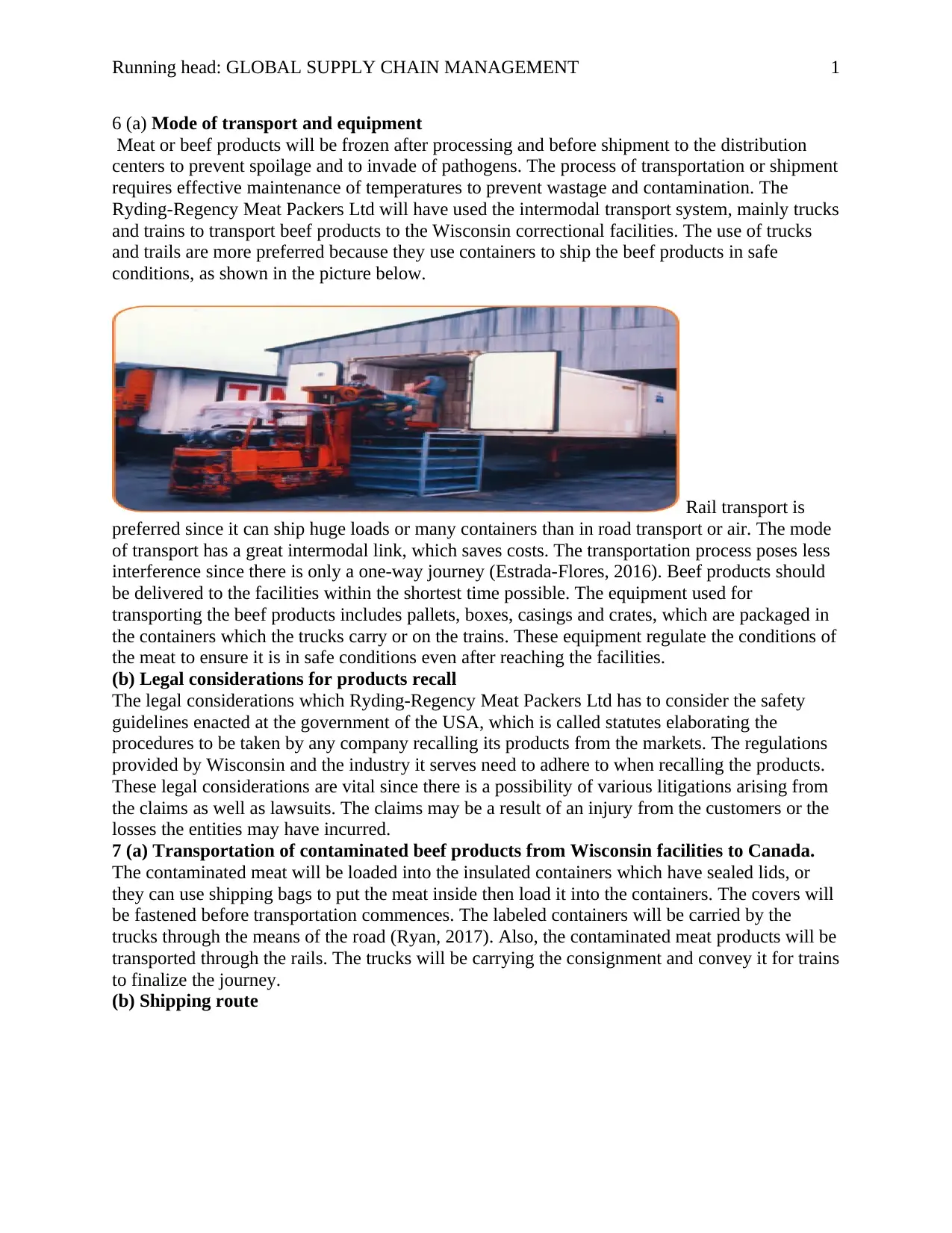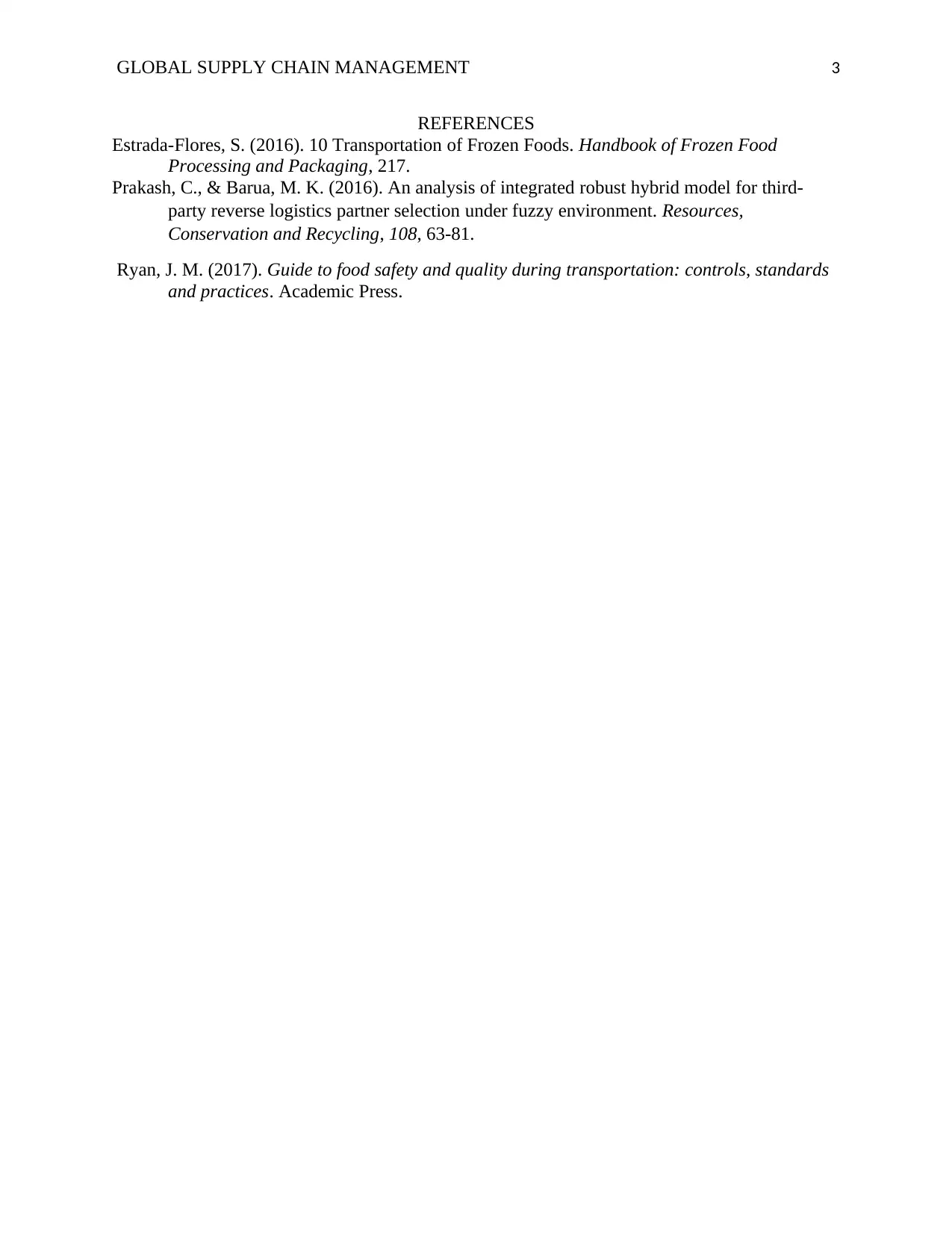Ryding-Regency Meat Packers Ltd: Global Supply Chain Management Report
VerifiedAdded on 2022/09/18
|3
|857
|26
Report
AI Summary
This report analyzes the global supply chain management of Ryding-Regency Meat Packers Ltd., a Canadian meat processing company. It examines the modes of transport and equipment used for shipping frozen beef products, emphasizing the intermodal transport system involving trucks and trains, as well as the containers, pallets, and crates used. The report addresses legal considerations for product recalls, referencing relevant statutes and regulations. It also details the transportation of contaminated beef products from Wisconsin to Canada, including shipping routes and security measures for reverse logistics, such as tracing, repackaging, and disposal. The analysis covers aspects like HZ codes and custom duties related to returning products, providing insights into managing recalls and ensuring supply chain security. The report is based on the course OPER8340 Term Project Winter 2020, which provides an opportunity to apply supply chain management tools & knowledge learned throughout the course to a real-world business environment.
1 out of 3





![[object Object]](/_next/static/media/star-bottom.7253800d.svg)